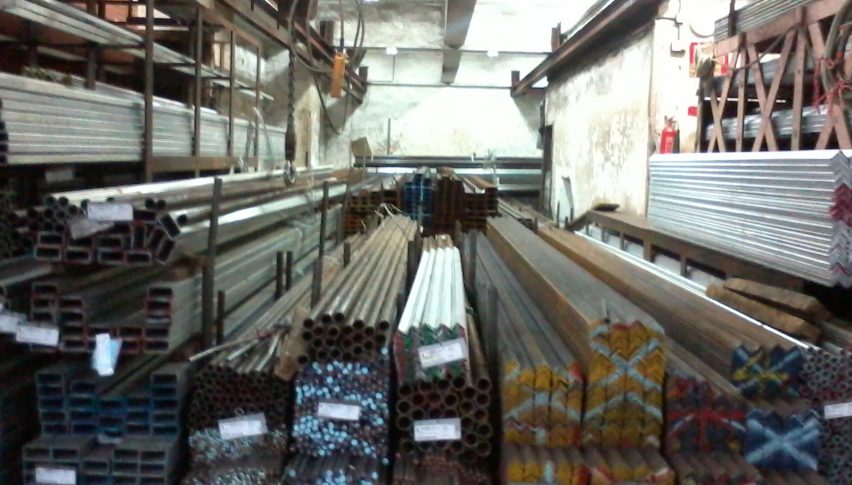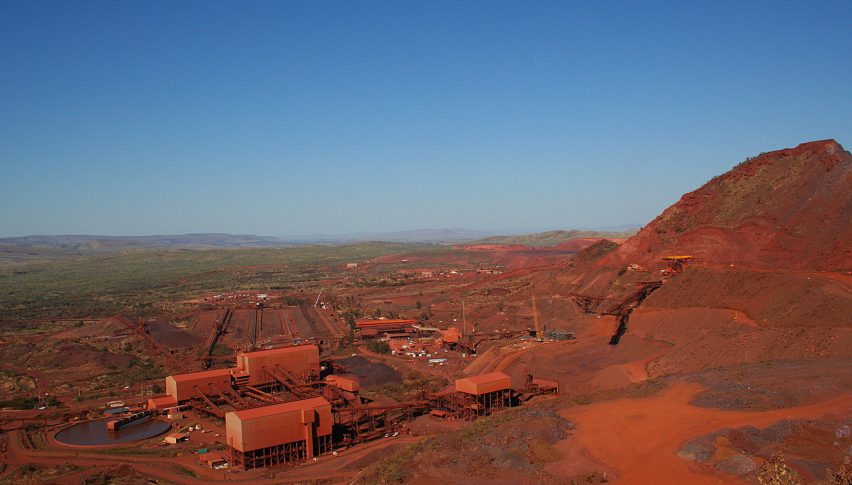Iron ore is one of the most common elements in the earth’s crust. Iron ore is rock from which metallic iron can be extracted. Iron ores are normally rich in iron oxides, and they can be found in a variety of colors, including dark gray, purple, rust-red or bright yellow. The main types of iron ore are hematite and magnetite. Taconite is an inferior-grade iron ore. On its own, iron is not strong enough for construction purposes and the manufacture of other objects, therefore raw iron is mixed with other elements, such as manganese, tungsten, nickel, chromium and vanadium for better results. Steel made from iron is used in manufacturing, construction, the automobile branch and many other industrial applications.
It is estimated that the United States has 110 billion tons of iron ore reserves, which translates to 27 billion tons of iron. Most of this ore is taconite, which is found in the Lake Superior district of Michigan.
How the Iron Ore Market Works:
Iron ore is a fundamental component of the global iron and steel industries. Approximately 98% of mined iron ore is used in the manufacture of steel. Over 50 countries worldwide mine iron ore, including Australia and Brazil, which dominate the market share for exports.
Mines in Michigan and Minnesota account for the bulk of iron ore production in the United States. It is worth noting that the US mines generated 48 million metric tons of iron ore in 2019. Australia produced 930 million tons, followed by Brazil with 480 million tons. In 2019, global prices for iron ore averaged $ 112.15 per ton, which was up by 21%, from $ 93 per ton in 2018. Prices were $ 88 per ton as of March 2020.
What Factors Influence Iron Ore Prices?
The reason for the collapse in iron prices can mainly be attributed to a drop in the demand for steel from China, as they purchase approximately two-thirds of the seaborne iron ore supply, which promotes major producers such as BHP Billiton (BHP), Rio Tinto (RIO) and Vale (VALE). These companies also have access to low-cost iron ore deposits, and they benefit from economies of scale. The market has moved into oversupply, due to increased production, which has forced high-cost iron ore mines to scale back production or fold.
Uses of iron:
1: It can be used to produce steel, and it is also used in civil engineering, for girders, reinforced concrete, etc.
2: Iron can also be used to manufacture alloy steels, such as carbon steels, with additives such as nickel, vanadium, chromium, manganese and tungsten.
3: Iron is broadly used in the building of bridges, electricity pylons, bicycle chains, cutting tools and rifle barrels.
4: Cast iron contains 3–5% carbon. It is used for valves, pipes, and pumps.
5: Iron catalysts can be used in the Haber process for producing ammonia.
6: Magnets can be made of this metal and its alloys and compounds.
Physical Properties of Iron:
1 It rusts in humid air, but not in dry air.
2: Being a metal, it is magnetic in nature.
3: At room temperature, this metal is found in the form of ferrite or α-form.
4: At 910°C, it changes to γ-iron, which is much softer in nature.
5: It melts at 1,536°C and boils at 2,861°C.
6: It dissolves readily in dilute acids.
Why is Iron Considered Different from Other Elements?
The difference is the number of protons found in the nucleus of the atoms. The number of protons makes each element unique. These numbers are used to organize them on the periodic table. The number of protons that are found in the atoms of an element is called the atomic number. On the periodic table, this number is found above the element symbol. Iron has 26 protons, so its atomic number is 26. The fact that iron has 26 protons in its nucleus is what makes it iron.
How is Iron Ore Produced?
There are 3 steps involved in making Iron:
1: Extraction
2: Refining
3: Manufacturing
1: Extraction
Most iron ore is mined in surface mines or open pit mines. Normally, heavy machinery removes the top layer of the earth over a wide area, exposing the iron ores. In rare cases, miners dig shafts into the earth, with side tunnels that allow them to follow the ore veins. Once the crude ore has been removed from the ground, it is loaded onto trucks and then the material is dumped into pit crushers.
2: Refining:
Pit-crushing machines crush the ore and separate the iron from contaminants, such as sand and clay. The best grades of iron ore have an iron content close to 70%, and they normally require less processing.
Lower grade ores rarely require further refining methods, referred to as beneficiation:
Further crushing and washing of the ores removes more sand and clay.
Magnetic separation is used to separate the iron from sand and clay
Pelletizing is a process of converting iron into pellets.
Sintering is a process of heating iron ores into a semi-molten mass.
3: Manufacturing:
Iron normally is produced in tower-shaped, brick-lined steel structures called blast furnaces. Iron ore, sinter, coke and limestone are poured into the top of the furnace, and hot air is blasted into the furnace from the bottom.
The hot air reacts with the carbon in the coke to generate carbon monoxide. The carbon monoxide then reacts with the iron ore to generate pure iron and carbon dioxide. Afterwards, the melted iron sinks to the bottom of the furnace, while the slag produced from the limestone reacting with the remaining impurities floats to the top. The iron and slag are removed from the furnace separately.



